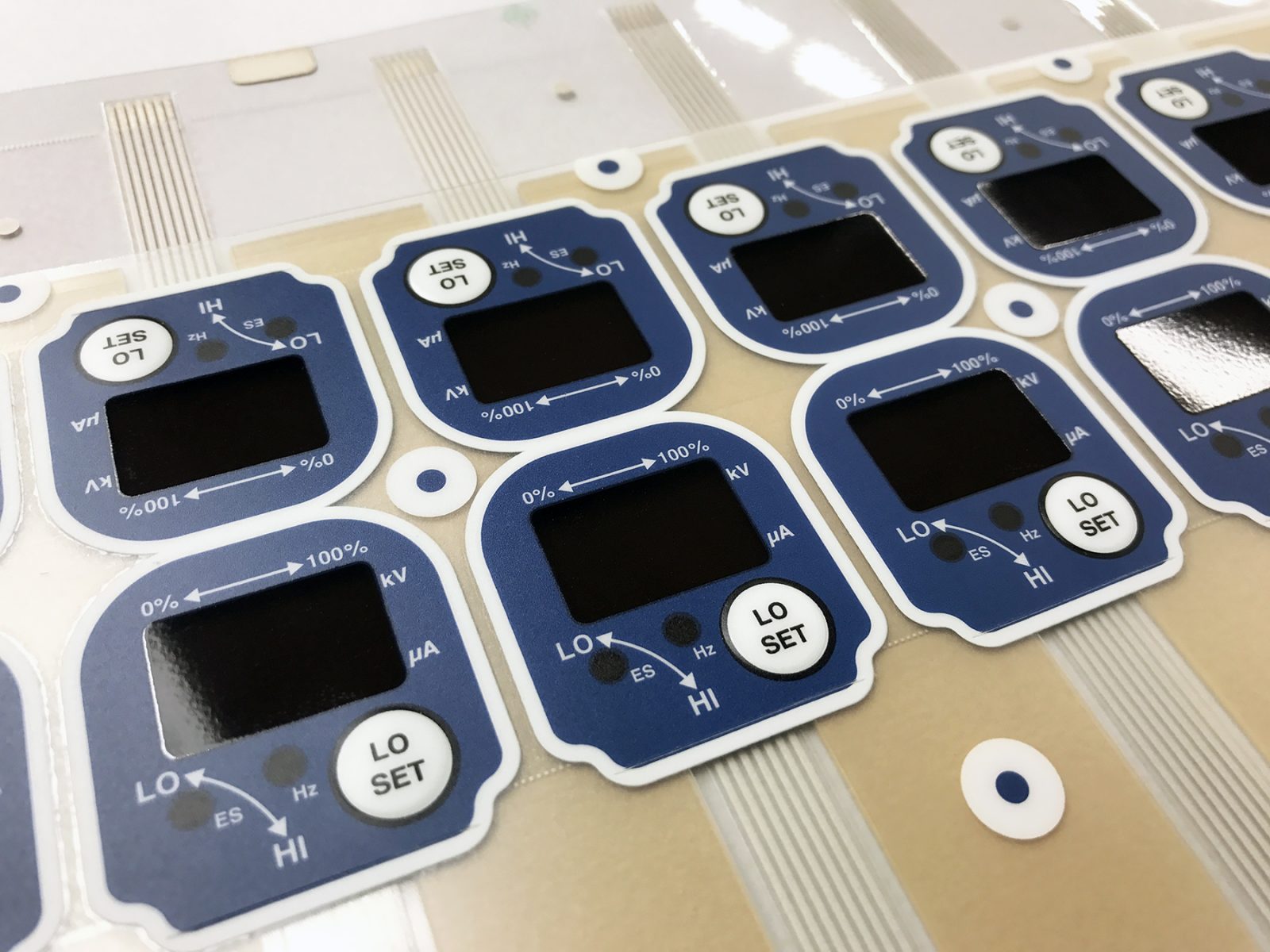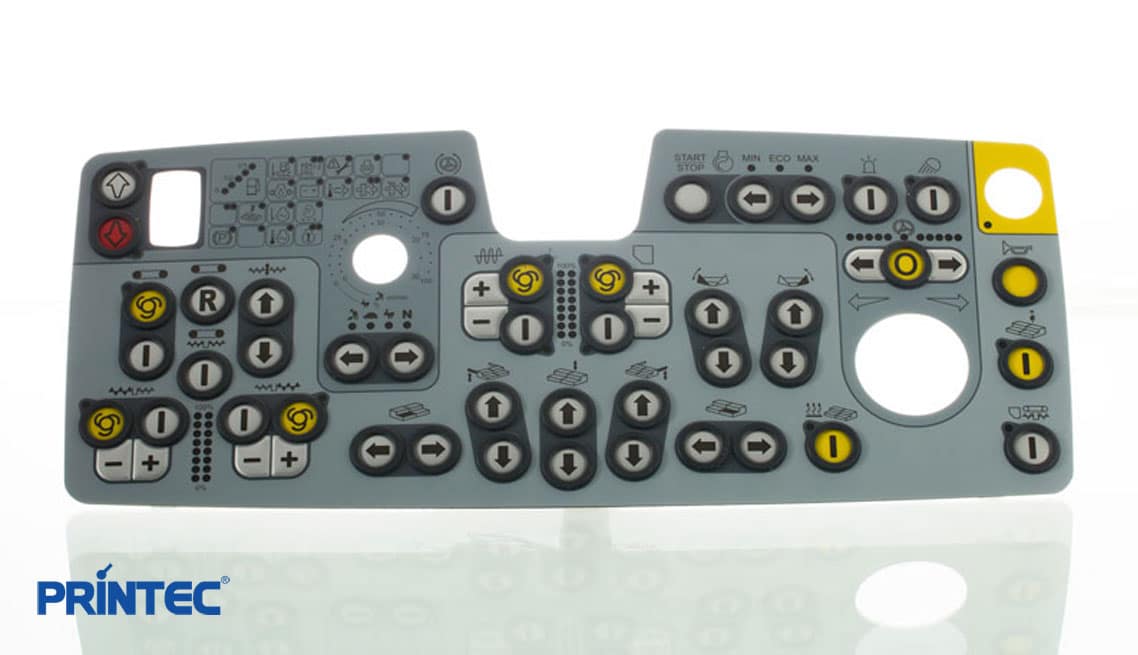Discover How Membrane Switches Are Tailored to Fulfill Particular Design Requirements
Discover How Membrane Switches Are Tailored to Fulfill Particular Design Requirements
Blog Article
Membrane Layer Changes Explained: A Comprehensive Guide to Their Advantages
Membrane switches stand for a flexible and sophisticated remedy for creating individual interfaces across a variety of fields. As markets increasingly seek efficient and trusted control user interfaces, recognizing the certain benefits and applications of membrane layer changes comes to be vital.
What Are Membrane Switches?

When stress is related to the membrane layer switch, the layers make get in touch with, completing an electric circuit. This straightforward system enables a wide variety of applications, from consumer electronics to industrial machinery. Membrane buttons are usually designed to be water resistant and resistant to dust and impurities, making them ideal for environments where toughness is crucial.
In addition, the versatility of the materials utilized in membrane layer changes assists in ingenious designs that can conform to various forms and dimensions. This flexibility contributes to their popularity in diverse fields, including medical devices, automobile controls, and home appliances. In general, membrane changes represent a vital component in modern-day customer interface innovation, connecting the space between individuals and electronic systems.
Key Benefits of Membrane Layer Switches
Among the myriad of user interface options readily available, membrane layer changes attract attention for their one-of-a-kind mix of advantages. One of the key advantages is their lightweight and portable style, which permits integration into a vast array of gadgets without adding considerable mass. This is particularly useful in applications where space is limited.
In addition, membrane layer switches over offer durability and resistance to ecological variables. They are generally built with products that can hold up against dampness, dust, and numerous chemicals, making them suitable for extreme conditions. This durability adds to a longer lifespan contrasted to conventional mechanical buttons.
Another substantial advantage is the flexibility in customization. Membrane layer buttons can be printed with different graphics, shades, and structures, permitting customized designs that fulfill particular branding or useful demands. This adaptability reaches the variety of layers and circuit alternatives, offering designers with numerous setups.
In addition, the responsive feedback supplied by some membrane layer switches improves customer experience, making them extra user-friendly to run. Lastly, the simplicity of cleansing and maintenance even more strengthens membrane buttons as a useful selection in both consumer and industrial applications. Membrane Switches. In general, these crucial benefits make them a recommended service for lots of developers and suppliers
Applications in Various Industries
How do membrane layer switches find their place across diverse markets? Their convenience and functionality make them indispensable components in fields ranging from health care to customer electronic devices. In clinical devices, membrane switches are made use of for their Our site convenience of cleaning and resistance to contamination, making certain health in environments where sterility is vital.
In the customer electronics industry, these buttons give smooth, straightforward user interfaces that boost product looks while keeping sturdiness against wear and tear. Automotive applications take advantage of membrane changes also, where they are used in dashboards and control board, using trusted efficiency in difficult conditions.
In addition, commercial machinery uses membrane layer buttons for control board because of their robustness, capability to stand up to severe environments, and personalized styles that deal with specific functional requirements. The food industry leverages membrane layer switches for their convenience of usage and resistance to spills, making sure operational effectiveness in fast-paced setups.
Ultimately, the versatility of membrane layer switches throughout these diverse applications highlights their crucial function in modern-day technology, enhancing user interaction while meeting industry-specific needs. Their proceeded development guarantees further integration right into arising fields and cutting-edge products.
Layout and Customization Alternatives
The style and modification options readily available for membrane switches are crucial for customizing user interfaces to meet certain customer needs and visual choices. These switches can be created in various shapes, dimensions, and formats, permitting seamless assimilation right into diverse applications. The adaptability in style implies that producers can develop one-of-a-kind interfaces that boost functionality and maintain brand name identity.
Custom shades, graphics, and textures can be put on the surface of the membrane switch, supplying a possibility for branding and user engagement. Furthermore, backlighting alternatives, such as LED illumination, can be integrated to boost presence in low-light conditions, therefore boosting functionality.
Functional aspects can additionally be tailored, including responsive responses and actuation force, which can be adjusted to fit various user interactions. The choice of products, such as polyester or polycarbonate, permits variations in durability and environmental resistance, satisfying the specific needs of various sectors.
Inevitably, the considerable layout and customization capabilities of membrane layer buttons allow business to develop visually appealing and easy to use interfaces, ensuring that their items fulfill both functional and aesthetic demands effectively. Membrane Switches.
Factors To Consider for Application
Implementing membrane layer switches over requires cautious factor to consider of numerous variables to guarantee optimal capability and user experience. Among the key factors to consider is the designated application setting. Factors such as direct exposure to dampness, extreme temperatures, company website and chemical substances can significantly influence the button's efficiency and longevity. Picking materials that hold up against these conditions is vital.

Another essential aspect is the switch's style and format. Guaranteeing that the tactile feedback and actuation pressure align with user expectations boosts use. Performing individual screening can supply important insights right into the ideal layout.
Furthermore, compatibility with digital parts should be assessed. The button's wiring ought to align with the overall system architecture, ensuring trustworthy signal transmission and minimizing disturbance.
Moreover, production methods and prices must be assessed. The selection in between custom layouts and conventional models can affect both budget plan and lead time.
Last but not least, think about repair and maintenance. Membrane switches might require certain cleaning and treatment treatments to preserve their look and performance in time. By resolving these considerations, companies can execute membrane layer switches that satisfy their operational demands while providing a favorable customer experience.

Conclusion
In conclusion, membrane switches over represent a functional and durable control user interface suitable for a broad range of applications across multiple sectors. Membrane Switches. As modern technology continues to evolve, the importance of membrane buttons in modern tools stays significant, supplying both capability and visual charm.
Membrane layer changes stand for a flexible and sophisticated remedy for creating customer interfaces across a range of sectors.Recognizing the fundamental parts of modern electronic user interfaces, membrane switches are a kind of user interface gadget from this source that are composed of flexible, slim layers of product. In general, membrane layer switches over represent an essential component in modern individual interface innovation, linking the space between users and electronic systems.
Amongst the myriad of individual interface alternatives offered, membrane switches stand out for their special mix of benefits.The layout and personalization options offered for membrane layer switches are crucial for tailoring interfaces to satisfy certain customer requirements and visual choices.
Report this page